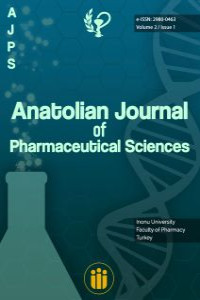Abstract
Project Number
TKP-2020-1766
References
- [1] Wallace S, McGrath BA. Laryngeal complications after tracheal intubation and tracheostomy. BJA Educ. 2021; 21(7): 250–257
- [2] Del Negro MS, Barreto G, Antonelli RQ, Baldasso TA, Meireles LR, Moreira MM, Tincani AJ. Effectiveness of the endotracheal tube cuff on the trachea: physical and mechanical aspects. Rev Bras Cir Cardiovasc. 2014; 29(4): 552–558
- [3] Bone DK, Davis LJ, Zuidema DG, Cameron JL. Aspiration Pneumonia: Prevention of Aspiration in Patients with Tracheostomies. The Annals of Thoracic Surgery. 1974; 18(1):30-37
- [4] Dongho S, Gerald L, Lin RJ. In-hospital mortality for aspiration pneumonia in a tertiary teaching hospital: A retrospective cohort review from 2008 to 2018. Journal of Otolaryngology - Head & Neck Surgery. 2023; 52(23):4425-30
- [5] Smith, J. et al. The Importance of Tracheostomy in Critical Care: A Comprehensive Review. Journal of Intensive Care Medicine. 2019; 45(2): 87-95
- [6] Johnson, A. et al. Complications and Challenges Associated with Cuffed Tracheostomy Cannulas: A Retrospective Study. Critical Care Nursing Journal. 2020; 55(4): 212-225
- [7] Anderson, L. et al. An Automated System for Managing Cuffed Tracheostomy Cannulas in Intensive Care: A Novel Approach. Medical Engineering and Technology Journal. 2022; 70(6): 324-35
- [8] Garcia, E. et al. The Impact of an Automated System on Reducing Aspiration Pneumonia Incidence in Tracheostomy Patients: Preliminary Findings. Healthcare Innovation Research Journal. 2023; 75(2)88-101
DESIGN AND DEVELOPMENT OF A PROTOTYPE OF PROGRAMMABLE TRACHEOSTOMY CANNULA THAT CAN PERFORM OVER-CUFF SUCTION FOR USE IN INTENSIVE CARE PATIENTS WITH DYSPHAGIA
Abstract
One of the most important risks in patients with respiratory device-related dysphagia is aspiration pneumonia. Since these patients do not have a swallowing reflex, secretions flowing from the mouth and nose area into the trachea accumulate on the cuff, creating a suitable environment for bacterial growth and causing pneumonia to develop in the patient. One of the most important risks in patients with respiratory device-related dysphagia is aspiration pneumonia. Since these patients do not have a swallowing reflex, secretions flowing from the mouth and nose area into the trachea accumulate on the cuff, creating a suitable environment for bacterial growth and causing pneumonia to develop in the patient. Currently, suctioning of these patients is performed manually by nurses. However, manual aspiration cannot provide disinfection at the desired level and cannot be performed as often as desired. In this study, a tracheostomy cannula prototype that can perform spontaneous cuff washing and aspiration was developed to eliminate these problems.
Ethical Statement
The study does not require any ethics committee approval.
Supporting Institution
Scientific Research Projects Coordination Unit of İnönü University
Project Number
TKP-2020-1766
Thanks
Scientific Research Projects Coordination Unit of İnönü University
References
- [1] Wallace S, McGrath BA. Laryngeal complications after tracheal intubation and tracheostomy. BJA Educ. 2021; 21(7): 250–257
- [2] Del Negro MS, Barreto G, Antonelli RQ, Baldasso TA, Meireles LR, Moreira MM, Tincani AJ. Effectiveness of the endotracheal tube cuff on the trachea: physical and mechanical aspects. Rev Bras Cir Cardiovasc. 2014; 29(4): 552–558
- [3] Bone DK, Davis LJ, Zuidema DG, Cameron JL. Aspiration Pneumonia: Prevention of Aspiration in Patients with Tracheostomies. The Annals of Thoracic Surgery. 1974; 18(1):30-37
- [4] Dongho S, Gerald L, Lin RJ. In-hospital mortality for aspiration pneumonia in a tertiary teaching hospital: A retrospective cohort review from 2008 to 2018. Journal of Otolaryngology - Head & Neck Surgery. 2023; 52(23):4425-30
- [5] Smith, J. et al. The Importance of Tracheostomy in Critical Care: A Comprehensive Review. Journal of Intensive Care Medicine. 2019; 45(2): 87-95
- [6] Johnson, A. et al. Complications and Challenges Associated with Cuffed Tracheostomy Cannulas: A Retrospective Study. Critical Care Nursing Journal. 2020; 55(4): 212-225
- [7] Anderson, L. et al. An Automated System for Managing Cuffed Tracheostomy Cannulas in Intensive Care: A Novel Approach. Medical Engineering and Technology Journal. 2022; 70(6): 324-35
- [8] Garcia, E. et al. The Impact of an Automated System on Reducing Aspiration Pneumonia Incidence in Tracheostomy Patients: Preliminary Findings. Healthcare Innovation Research Journal. 2023; 75(2)88-101
Details
| Primary Language | English |
|---|---|
| Subjects | Biomedical Instrumentation |
| Journal Section | Research Articles |
| Authors | |
| Project Number | TKP-2020-1766 |
| Publication Date | December 13, 2023 |
| Submission Date | November 8, 2023 |
| Acceptance Date | November 30, 2023 |
| Published in Issue | Year 2023 Volume: 2 Issue: 1 |
This work is licensed by CC by under the Creative Commons Attribution 4.0 International License.



